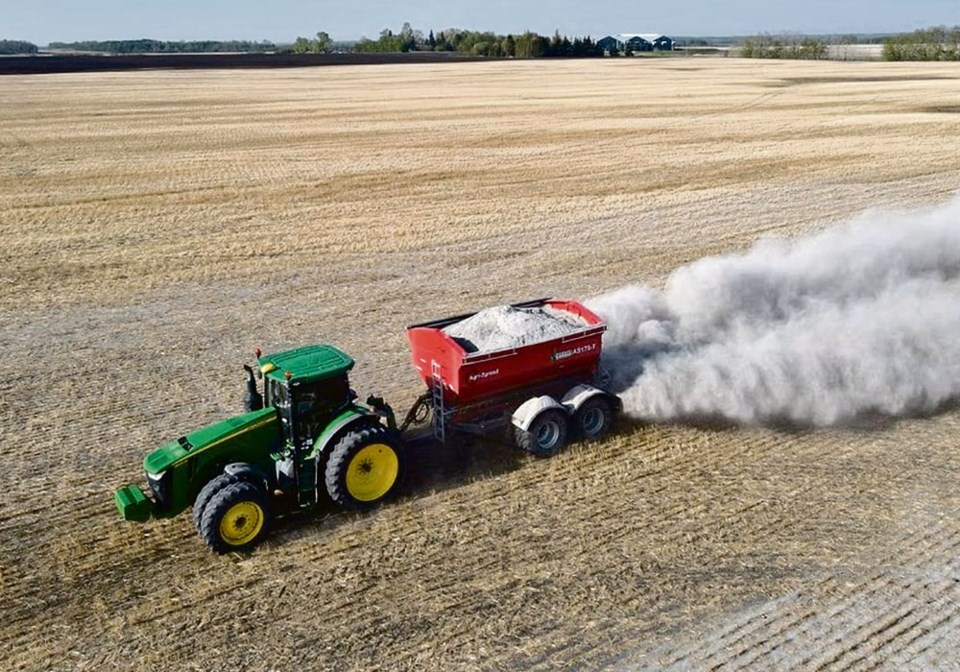SASKATOON — With farmers in Western Canada facing another year of expensive crop inputs, a soil amendment that helps cut these costs by using what’s already there could be attractive.
“We’ve been over-fertilizing for 50 years,” said Morgan Duggan, sales agronomist with NorStar Agriculture, which specializes in amendments to deal with pH, salinity, toxicity and other soil health issues.
Unfortunately, much of that fertilizer is unavailable to the crop. Some is carried down beyond the soil zone, potentially contaminating ground and surface water. Some is lost through off gassing to the atmosphere, adding to agricultural greenhouse gas emissions.
Some fertilizer, however, remains in the root zone but the crop can’t get at it due to soil pH. This means that adding more fertilizer, and more expense, is unlikely to produce the desired yields. Soil pH can also affect the crop’s ability to access and absorb micronutrients and phosphorus.
“That’s why we suggest, before people buy from us, that they do soil analysis,” said Norstar soil scientist Ali El-Naggar.
El-Naggar, together with colleagues at the University of Alberta, wanted to see if changing the soil chemistry might make those bound-up nutrients available to the crop.
“It’s all because most of the soils in Alberta and Saskatchewan in general are suffering from soil acidity. So when the soil pH becomes 5, 5.5 or even 6, this low pH makes the fertilizer use efficiency very low.”
El-Naggar and his colleagues began with soil tests on their research fields to come up with an optimum fertilizer treatment.
They applied this to one field, while on another, they applied Norstar’s ag lime product (cement kiln dust) to buffer the soil acidity. They also applied the same fertilizer treatment but cut in half.
“We found that when we added the cement kiln dust to soil, with only half the amount of chemical fertilizers, we were able to get the same results as adding the full amount,” El-Naggar said.
“This meant we were able to reduce the reliance on chemical fertilizer by half while still getting the same yield and sometimes better.”
Ironically, in some cases it is supplementary fertilizer, specifically ammonium and some types of phosphorus, that can cause an acidity problem. This is true no matter the source, whether it be urea, manure or legumes.
Acidic soil also occurs naturally where forests (rather than grasslands) have been cleared to grow crops.
Duggan cautioned that the performance in the study is for only one year and may not be a predictor for future crops, at least not without more soil testing to back it up.
For one thing, as residual fertilizer levels are drawn down, new application rates might need to come up. Also, while lime treatment can last five to 10 years depending on local soil conditions, its effects eventually fade.
Again, soil testing is imperative. Duggan said cost of lime application can vary widely depending on the soil — $40 to $340 an acre. Another drawback is the quantity needed. Liming applications can run into thousands of pounds per acre compared to generally less than 100 lb. per acre for nitrogen fertilizer, for example.
Norstar also offers a gypsum product to amend unproductive saline patches.
“It drives the sodium out of the root zone,” Duggan said.
She explained that the calcium in the gypsum binds to the sodium and magnesium, producing soluble compounds that are washed down past the root zone. Any leftover calcium, which is a plant nutrient, can actually be beneficial to the crop.




